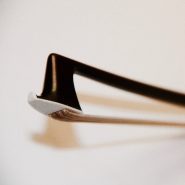Tag: variation
By Selma Gokcen June 16, 2013
Subjects Playing Healthy
Tags about thumbs, advances, Arizona State University, brain, brain space, cello, cellobello, Changes in the ligament, Chimps and monkeys, closed fist position, conform the thumb, dexterity, discussion, Gokcen, grasp, highest levels, index finger, language, manipulate tools, Mary Marzke, middle finger, modern humans, modified design, neck of the cello, opening and closing the hand, palm, physical anthropologist, playing a musical instrument, potential, primates, professor, Selma, skill, talent, Thumbs, variation
By Brant Taylor November 28, 2012
Subjects Practicing, Technique
Tags bow speed, bow technique, Brant, bridge, cello, cellobello, contact point, control, pressure, relaxation, struggle, Taylor, tone, variables, variation, Vibrations, weight


